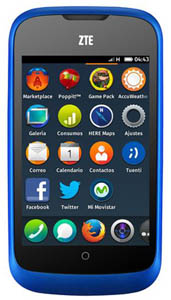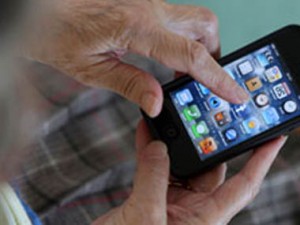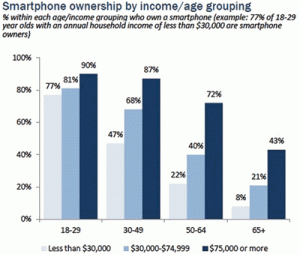The Chinese are coming! The Chinese are coming!

On Monday, the Chinese mobile phone manufacturer ZTE announced it will release its ZTE Open, a smartphone based off Mozilla’s FireFox OS (FxOS). Starting Friday, eBay will sell them exclusively in the US for $80, unlocked.
Few paid attention to this critical notice–a search on Google yielded only 39,600 results that day. By comparison, Apple also announced on Monday that it will be announcing its iPhone 5s on September 10–the web went wild with over 3,900,000 results.
If I had a horse in Silicon Valley, I would have recreated Paul Revere’s Ride down Sand Hill Road though I doubt that anyone would’ve noticed.
It’s a pity considering this: the ZTE Open is to the iPhone as the Chromebook is to the MacBook.
Here are a some more reasons why you need to pay attention:
- Laptop sales are crashing while smartphone sales are skyrocketing. Kudos to the Chinese for nailing the timing just right. Only 56% of Americans own a smartphone. The other 44% of Americans will within the next five years. An $80 contract-free smartphone will look far more appealing than an $800 iPhone for many late adopters and lower-income users.
- It’s the first smartphone developed for the developing world. Do the math. Only 1.5 billion of the 6.9 billion mobile phones in the world are smartphones. At $80 each, the ZTE Open is within reach of millions today and 100s of millions more as that price drops.

- The ZTE Open is ‘open.’ For you non-techies, the phone runs on Mozilla’s FireFox OS (FxOS), which is a lean, Linux-based platform. It’s truly an open standard. FxOS remains free of the Draconian developer restrictions of Apple, and similar, if more relaxed, requirements of Google. While this might expose phones to issues like malware, app developers have long complained about the high commissions paid and software review delays often tied to app stores.
- FxOS apps are limited, but lean: Unlike their Android and iOS relatives, these apps are strictly HTML5-based and have limited capabilities–no heavy data crunching or extreme graphics. That said, they also don’t require high-end processors. Since most people aren’t hardcore gamers and don’t manage servers from their phones, this isn’t an issue. FXOS app development is far easier and less complex as these are basically web applications. Many popular apps are already FxOS-ready: Angry Birds, Facebook, and WhatsApp.
- And it’s a mobile web world after all: The ZTE Open offers what few feature phones provide–access to the Internet as well as access Google Maps, news content and even email from an $80 (unlocked) smartphone.
Considering these points, how else will the ZTE Open impact our mobile world?



